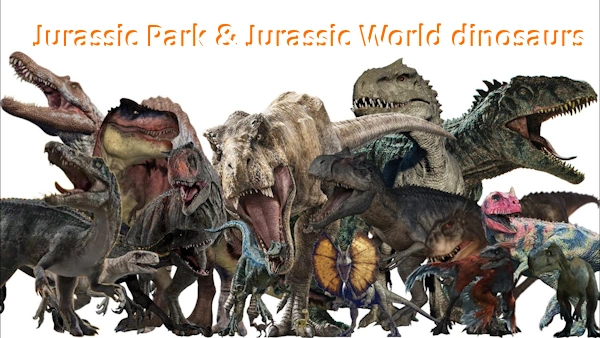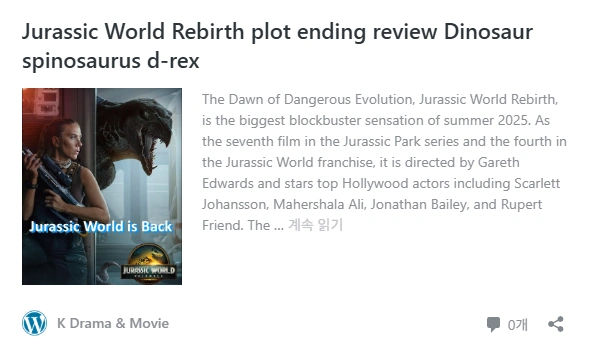Introducing Jurassic Park dinosaurs and Jurassic World dinosaurs.The Jurassic Park and Jurassic World franchise is one of the most iconic science fiction film series in cinematic history, created by Michael Crichton and brought to the screen by Universal Pictures and Amblin Entertainment. The story centers on the disastrous consequences of cloning dinosaurs and attempting to control them within theme parks.
The series began with Jurassic Park (1993), directed by Steven Spielberg and based on Crichton’s bestselling novel. The film was groundbreaking for its use of computer-generated imagery and animatronics, setting a new standard for visual effects and reviving public fascination with dinosaurs. The plot follows John Hammond, who invites a group of experts to Isla Nublar to endorse his dinosaur theme park. When the park’s security systems fail, the dinosaurs escape, forcing the visitors to fight for survival. The film became a massive box office success, grossing over $1.1 billion worldwide including re-releases, and is credited with changing the public perception of dinosaurs, making them more dynamic and bird-like in popular culture.
The Lost World: Jurassic Park (1997), also directed by Spielberg, follows Ian Malcolm as he leads an expedition to Isla Sorna, a secondary island where dinosaurs were bred. The story expands the franchise’s universe and explores the consequences of bringing dinosaurs to the mainland. The film grossed $618.6 million worldwide, becoming the second-highest-grossing film of 1997.
Jurassic Park III (2001), directed by Joe Johnston, continues the story with Dr. Alan Grant returning to Isla Sorna to help find a missing boy, introducing new dinosaurs and action sequences. The film grossed $368.8 million worldwide, which was lower than its predecessors but still a commercial success.
After a 14-year hiatus, the franchise was revived with Jurassic World (2015), directed by Colin Trevorrow. Set 22 years after the original, the film features a fully operational dinosaur theme park on Isla Nublar. The story introduces new characters, such as Owen Grady and Claire Dearing, and explores the dangers of genetic engineering with the creation of the Indominus Rex, a hybrid dinosaur. The park’s attempt to weaponize raptors and the chaos that ensues highlight the ongoing conflict between scientific ambition and ethical responsibility. Jurassic World was a major box office hit, grossing $1.671 billion worldwide, making it the highest-grossing film in the franchise and one of the top ten films of all time globally.
Jurassic World: Fallen Kingdom (2018), directed by J.A. Bayona, deals with the aftermath of the park’s destruction and the ethical dilemma of rescuing dinosaurs from a volcanic eruption. The film introduces the Indoraptor, another hybrid, and explores the exploitation of dinosaurs for profit and military use. The story also touches on human cloning, expanding the franchise’s themes of genetic manipulation and its consequences. The film grossed $1.31 billion worldwide, making it the third Jurassic film to pass the billion-dollar mark and the third-highest-grossing film of 2018.
Jurassic World Dominion (2022), directed by Colin Trevorrow, brings together characters from both the original and new trilogies. Dinosaurs are now spread across the globe, forcing humanity to confront the challenge of coexisting with these prehistoric creatures. The film explores the global impact of genetic engineering and the blurred line between science and nature. Dominion grossed just over $1 billion worldwide, ranking as the third-highest-grossing movie of 2022.
Jurassic World: Rebirth (2025), directed by Gareth Edwards and written by David Koepp, is set to continue the story after Dominion. The film introduces new characters and challenges, focusing on the ongoing consequences of releasing dinosaurs into the modern world. Rebirth opened with $30.5 million on its first day in the US and is projected to reach $120–140 million in its five-day opening weekend. While its debut is below previous trilogy installments, it remains a significant summer release for 2025.
Across its history, the Jurassic Park and Jurassic World series has not only entertained audiences but also sparked renewed interest in paleontology and scientific discovery. The films have become a cultural phenomenon, influencing everything from museum exhibits to theme park attractions, and continue to shape how dinosaurs are imagined in popular culture. As of 2025, the franchise has grossed over $6 billion worldwide, with three films surpassing the $1 billion mark and maintaining their status as some of the most successful blockbusters in history.

Table of Contents
Jurassic Park dinosaurs
Jurassic Park (1993)
Tyrannosaurus, Velociraptor, Dilophosaurus, Gallimimus, Triceratops, Brachiosaurus, Parasaurolophus
The Lost World: Jurassic Park (1997)
Tyrannosaurus, Velociraptor, Compsognathus, Gallimimus, Triceratops, Mamenchisaurus, Parasaurolophus, Pachycephalosaurus, Stegosaurus, Pteranodon
Jurassic Park III (2001)
Tyrannosaurus, Velociraptor, Spinosaurus, Compsognathus, Ceratosaurus, Triceratops, Brachiosaurus, Parasaurolophus, Corythosaurus, Stegosaurus, Ankylosaurus, Pteranodon
Jurassic World dinosaurs
Jurassic World (2015)
Tyrannosaurus, Velociraptor, Gallimimus, Triceratops, Apatosaurus, Parasaurolophus, Stegosaurus, Ankylosaurus, Pachycephalosaurus, Pteranodon, Dimorphodon, Mosasaurus, Indominus Rex
Jurassic World: Fallen Kingdom (2018)
Tyrannosaurus, Velociraptor, Carnotaurus, Baryonyx, Allosaurus, Compsognathus, Gallimimus, Triceratops, Sinoceratops, Brachiosaurus, Apatosaurus, Parasaurolophus, Stegosaurus, Ankylosaurus, Stygimoloch, Pteranodon, Mosasaurus, Indoraptor
Jurassic World: Dominion (2022)
Tyrannosaurus, Velociraptor, Giganotosaurus, Therizinosaurus, Atrociraptor, Dilophosaurus, Pyroraptor, Oviraptor, Carnotaurus, Baryonyx, Allosaurus, Compsognathus, Gallimimus, Triceratops, Sinoceratops, Nasutoceratops, Brachiosaurus, Apatosaurus, Dreadnoughtus, Parasaurolophus, Iguanodon, Stegosaurus, Ankylosaurus, Stygimoloch, Pteranodon, Dimorphodon, Quetzalcoatlus, Mosasaurus, Dimetrodon, Lystrosaurus, Genetically Modified Locust, Moros, Microceratus
Jurassic World: Rebirth (2025)
Tyrannosaurus, Velociraptor, Spinosaurus, Compsognathus, Titanosaurus, Parasaurolophus, Ankylosaurus, Triceratops, Aquilops, Quetzalcoatlus, Dilophosaurus, Pteranodon, Anurognathus, Mosasaurus, Distortus Rex, Mutadon
Battle at Big Rock (2019)
Allosaurus, Compsognathus, Nasutoceratops, Parasaurolophus, Stegosaurus, Pteranodon, Mosasaurus
Jurassic World: Camp Cretaceous (2020)
Tyrannosaurus, Velociraptor, Dilophosaurus, Ceratosaurus, Baryonyx, Compsognathus, Tarbosaurus, Carnotaurus, Monolophosaurus, Spinosaurus, Gallimimus, Sinoceratops, Brachiosaurus, Parasaurolophus, Ouranosaurus, Stegosaurus, Kentrosaurus, Ankylosaurus, Pteranodon, Dimorphodon, Mosasaurus, Indominus Rex, Scorpios Rex, Nothosaurus, Smilodon, Spinoceratops
Jurassic World: Chaos Theory (2024)
Tyrannosaurus, Velociraptor, Atrociraptor, Pyroraptor, Carnotaurus, Baryonyx, Suchomimus, Allosaurus, Compsognathus, Monolophosaurus, Gallimimus, Sinoceratops, Nasutoceratops, Brachiosaurus, Parasaurolophus, Stegosaurus, Ankylosaurus, Stygimoloch, Pteranodon, Dimorphodon, Lystrosaurus, Genetically Modified Locust, Becklespinax, Majungasaurus, Pachyrhinosaurus
Tyrannosaurus Rex
Species: Tyrannosaurus Rex
Origin: Isla Nublar, Isla Sorna, Saint Hubert
Height: 4 m
Length: 12.3 m
Weight: 8 t
Notable Appearances: Jurassic Park series, Jurassic World series, Jurassic World: Rebirth
The Tyrannosaurus Rex, affectionately known as “Rexy,” is the undisputed icon of the Jurassic franchise. First introduced in Jurassic Park (1993), Rexy’s breakout scene—escaping her paddock during a thunderstorm—became one of cinema’s most memorable moments. She is portrayed as both a terrifying apex predator and, at times, an unexpected protector, famously saving the main characters from Velociraptors in the original film’s climax.
In The Lost World: Jurassic Park, the T. rex family dynamic is explored, with both adult and juvenile rexes displaying fierce parental instincts and causing chaos in both Isla Sorna and San Diego. In Jurassic Park III, the T. rex faces a shocking defeat at the jaws of Spinosaurus, signaling a new era of dinosaur dominance.
Rexy returns in the Jurassic World series, reclaiming her place at the top of the food chain by teaming up with Velociraptor Blue to defeat the Indominus rex. In Fallen Kingdom, she is depicted as a force of nature—rescuing humans, asserting dominance over other dinosaurs, and ultimately symbolizing the untamable power of prehistoric life. Throughout the series, Rexy’s intelligence, resilience, and iconic roar make her a fan favorite and the living emblem of the franchise.
Spinosaurus
Species: Spinosaurus aegyptiacus
Origin: Isla Sorna, Saint Hubert
Height: 4 m ~ 4.9 m
Length: 12 m ~ 13.4 m
Weight: Over 8 ~ 10 t
Notable Appearances: Jurassic Park III, Jurassic World: Camp Cretaceous, Jurassic World: Rebirth
Spinosaurus is introduced as a new apex predator in Jurassic Park III, immediately establishing its dominance by defeating a T. rex in a dramatic battle—a moment that shocked fans and redefined the franchise’s power hierarchy. Its design features a crocodile-like snout and a massive sail, emphasizing its semi-aquatic lifestyle.
Throughout the film, Spinosaurus relentlessly pursues the main characters, demonstrating intelligence, persistence, and an almost unstoppable drive. In later appearances, such as Jurassic World: Camp Cretaceous and Rebirth, Spinosaurus continues to be depicted as a formidable and unpredictable threat, often associated with water-based environments. Its unique look and memorable scenes have cemented it as one of the most talked-about dinosaurs in the series.
Titanosaurus
Species: Titanosaurus
Origin: Saint Hubert
Height: 15.7 m
Length: 30 m
Weight: 70 t
Notable Appearances: Jurassic World: Rebirth
Titanosaurus is presented as the largest land animal in the Jurassic universe, making its debut in Jurassic World: Rebirth. Towering above other dinosaurs, its gentle nature contrasts with its enormous size. The film showcases breathtaking scenes of Titanosaurus herds moving across vast landscapes, evoking awe and wonder.
Titanosaurus serves as a symbol of the majesty and scale of prehistoric life, often appearing in moments that highlight the beauty and fragility of the revived ecosystem. Its presence is a reminder of the grandeur and diversity of the ancient world.
Mosasaurus
Species: Mosasaurus
Origin: Saint Hubert
Height: 6 m
Length: 30 m
Weight: 20 t
Notable Appearances: Jurassic World series, Jurassic World: Rebirth
Mosasaurus is a colossal marine reptile that dominates the aquatic scenes in the Jurassic World films. Its first appearance, leaping from the water to devour a shark in Jurassic World, instantly became iconic. Mosasaurus is portrayed as the apex predator of the seas, capable of taking down even the most formidable land dinosaurs that venture too close to the water.
In Jurassic World: Fallen Kingdom and Rebirth, Mosasaurus is shown surviving in the wild, creating tension and spectacle in every scene it appears. Its sheer size, power, and unpredictability make it a constant threat and a highlight of the franchise’s action sequences.
Quetzalcoatlus
Species: Quetzalcoatlus northropi
Origin: Saint Hubert
Height: 5 m
Length: 10 m
Wingspan: 11 m
Weight: 250 kg
Notable Appearances: Jurassic World: Rebirth
Quetzalcoatlus is depicted as the largest flying animal in the Jurassic franchise, with an immense wingspan and predatory prowess. In Jurassic World: Rebirth, it is shown hunting both from the air and on land, attacking vehicles and preying on smaller dinosaurs.
Its dramatic aerial attacks add a new dimension of danger and excitement to the film, demonstrating the threat posed by prehistoric life not just on land or in water, but also in the skies. Quetzalcoatlus’s scenes are visually stunning and emphasize the diversity of the revived ancient ecosystem.
Aquilops
Species: Aquilops
Origin: Saint Hubert
Height: 0.6 m
Length: 1 m
Weight: 5 kg
Notable Appearances: Jurassic World: Rebirth
Aquilops is a small, herbivorous dinosaur that brings charm and light-hearted moments to Jurassic World: Rebirth. Often depicted interacting with human characters or as part of larger herds, Aquilops serves as a reminder of the gentler, more approachable side of the prehistoric world.
Its diminutive size and curious behavior make it a favorite among younger audiences and provide balance to the film’s more intense action sequences.
Distortus rex (D-Rex)
Species: Distortus rex (Tyrannosaurus + unidentified hybrid)
Origin: Saint Hubert
Height: 8.1 m
Length: 14.5 m
Weight: 9 t
Notable Appearances: Jurassic World: Rebirth
Distortus rex is a genetically engineered hybrid, combining T. rex DNA with that of unknown species. In Jurassic World: Rebirth, it is unleashed as an ultimate predator—larger, more aggressive, and even more unpredictable than its predecessors.
Its unique, monstrous appearance and formidable abilities make it the central antagonist of the film. Distortus rex embodies the dangers of unchecked genetic experimentation and serves as a cautionary symbol within the story.
Mutadon
Species: Mutadon (Velociraptor + unidentified pterosaur hybrid)
Origin: Saint Hubert
Height: 2 m
Length: 6 m
Wingspan: 8 m
Weight: 350 kg
Notable Appearances: Jurassic World: Rebirth
Mutadon is a bizarre hybrid, combining the agility and intelligence of a Velociraptor with the flight capabilities of a pterosaur. In Jurassic World: Rebirth, Mutadon is depicted as a cunning and relentless predator, capable of gliding over obstacles and launching surprise attacks.
Its hybrid nature makes it a unique and unpredictable threat, challenging both the human characters and other dinosaurs in new and dangerous ways.
Velociraptor
Species: Velociraptor
Origin: Isla Sorna, Saint Hubert
Height: 1.8 m
Length: 2 m
Weight: 15 kg
Notable Appearances: Jurassic Park series, Jurassic World series, Jurassic World: Rebirth
Velociraptors are portrayed as highly intelligent, social predators, capable of complex communication and cooperation. From the original Jurassic Park through the Jurassic World series, raptors are both feared and respected, with characters like Blue becoming central to the story.
Their cunning, speed, and loyalty make them both formidable adversaries and, at times, unlikely allies to the human protagonists, contributing to some of the franchise’s most memorable and suspenseful scenes.
Dilophosaurus
Species: Dilophosaurus
Origin: Isla Sorna, Saint Hubert
Height: 1.8 m
Length: 6 m
Weight: 400 kg
Notable Appearances: Jurassic Park, Jurassic World: Rebirth
Dilophosaurus is famous for its frilled neck and venom-spitting ability, first terrifying audiences in Jurassic Park when it attacks Dennis Nedry. Its return in Jurassic World: Rebirth brings back its unique and deadly hunting style, providing both nostalgia and renewed danger for the film’s characters.
Compsognathus
Species: Compsognathus
Origin: Isla Sorna, Saint Hubert
Height: 0.3 m
Length: 1.2 m
Weight: 3 kg
Notable Appearances: The Lost World: Jurassic Park, Jurassic World: Rebirth
Compsognathus, or “Compy,” is a small, opportunistic scavenger. Despite its size, it can be dangerous in numbers, as seen in The Lost World: Jurassic Park. In Rebirth, Compys provide both comic relief and moments of tension when they swarm their prey, highlighting the dangers of underestimating even the smallest dinosaurs.
Apatosaurus
Species: Apatosaurus
Origin: Isla Nublar, Saint Hubert
Height: 4.5 m
Length: 23 m
Weight: 20 t
Notable Appearances: Jurassic World, Jurassic World: Rebirth
Apatosaurus is depicted as a gentle giant, often seen moving in herds across open plains. Its scenes in Jurassic World, especially the emotional moment of its death, emphasize the tragedy and wonder of resurrecting extinct species. In Rebirth, Apatosaurus continues to symbolize the majesty and vulnerability of the Jurassic world.
Parasaurolophus
Species: Parasaurolophus
Origin: Isla Sorna, Saint Hubert
Height: 4 m
Length: 10 m
Weight: 2.5 t
Notable Appearances: Jurassic Park series, Jurassic World series, Jurassic World: Rebirth
Parasaurolophus is known for its distinctive cranial crest and herd behavior. It often appears in peaceful grazing scenes, contributing to the realism and diversity of the park’s ecosystem. Its presence adds a sense of authenticity and scale to the prehistoric world.
Ankylosaurus
Species: Ankylosaurus
Origin: Isla Sorna, Saint Hubert
Height: 1.7 m
Length: 7 m
Weight: 6 t
Notable Appearances: Jurassic World series, Jurassic World: Rebirth
Ankylosaurus is an armored herbivore, famous for its clubbed tail and defensive abilities. In the films, it uses its armor to fend off predators, providing thrilling action sequences and showcasing the diversity of dinosaur survival strategies.
Triceratops
Species: Triceratops
Origin: Isla Nublar, Isla Sorna, Saint Hubert
Height: 3 m
Length: 9 m
Weight: 6 t
Notable Appearances: Jurassic Park series, Jurassic World series, Jurassic World: Rebirth
Triceratops is a classic three-horned herbivore, often depicted as both gentle and formidable. Its scenes range from peaceful grazing to dramatic battles with predators, making it a staple of the franchise and a favorite among fans for its distinctive appearance and role in memorable moments.
Pteranodon
Species: Pteranodon
Origin: Isla Sorna, Saint Hubert
Height: 2 m
Length: 6 m
Wingspan: 7 m
Weight: 70 kg
Notable Appearances: Jurassic Park III, Jurassic World series, Jurassic World: Rebirth
Pteranodon is a large flying reptile, featured in dramatic aerial attack scenes. Its ability to swoop down and snatch prey adds excitement and danger to the films’ sky-based sequences, making it a memorable part of the franchise’s action set pieces.
Anurognathus
Species: Anurognathus
Origin: Saint Hubert
Height: 0.2 m
Length: 0.5 m
Wingspan: 0.5 m
Weight: 0.1 kg
Notable Appearances: Jurassic World: Rebirth
Anurognathus is a tiny pterosaur, depicted in swarms or as background creatures. While not a main threat, their presence adds to the authenticity and biodiversity of the prehistoric world recreated in the film.
Compsognathus
Species: Compsognathus
Origin: Isla Sorna, Saint Hubert
Height: 0.3 m
Length: 1.2 m
Weight: 3 kg
Notable Appearances: The Lost World: Jurassic Park, Jurassic World: Rebirth
Description and Role in the Films
Compsognathus, often called “Compy,” is a small, nimble dinosaur known for its speed and scavenging behavior. Despite its tiny size, Compy can be surprisingly dangerous when hunting in packs, as shown in The Lost World: Jurassic Park, where a group of them overwhelms and attacks a human character. In Jurassic World: Rebirth, Compys appear in both comic and tense moments—sometimes providing lighthearted relief, but also reminding viewers that even the smallest dinosaurs can pose a threat when they act together. Their swarming behavior and quick movements make them memorable supporting creatures throughout the franchise.
Dunkleosteus
Species: Dunkleosteus
Origin: Saint Hubert
Height: 2 m
Length: 6 m
Weight: 1 t
Notable Appearances: Jurassic World: Rebirth
Dunkleosteus is a prehistoric armored fish, known for its powerful jaws and fearsome appearance. In Rebirth, it appears in underwater scenes, adding to the variety of marine life and providing new challenges for both dinosaurs and human characters.
Megalodon
Species: Megalodon
Origin: Saint Hubert
Height: 4 m
Length: 18 m
Weight: 48 t
Notable Appearances: Jurassic World: Rebirth
Megalodon is a giant prehistoric shark, featured in intense underwater sequences. Its immense size and predatory nature make it a formidable threat, rivaling even the largest marine reptiles. In Rebirth, Megalodon is depicted as an unstoppable force in the ocean, delivering some of the film’s most suspenseful and action-packed moments.
- Netfilx Movie The Great Flood Ending Explained review (cast & location)
- BTS Jungkook & Aespa Winter dating rumors evidence: Matching bracelet, couple tattoo, and couple outfits
- Black and White Chef: Culinary Class Wars Season 2 Chef list & instagram
- The love story of Girls’ Generation’s Tiffany and Byun Yo han
- After 6 years Full change New Kia Seltos 2026 review (trim & price)





